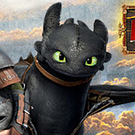Is there a reason why morph weights are limited between 0 and 1, other than protecting us from unintended results? If so I would like to propose lifting this limitation altogether (and getting the same result with a
Clamp
) or being able to set the
min
and
max
for each weight (like in Blender), defaulting to 0 and 1.
There are situations where a weight greater than 1 - or even negative - is very useful. Since morphs are merely vertex offsets, the effect can easily be multiplied by any scalar.
It seems removing
this line
would be the simplest solution.
Lifting morph weight limits


Could be removed, just need to change the check above to check for anything else than 0 and generate the morph VBs in that case.

Right, this check .
Will do. Maybe tonight. But don’t let this stop anyone else.

I already pushed a change to master, but missed that check. Will update.

Awesome!

Thanks again

hi
@Modanung
/ All
I am planning to experiment on negative weights for vertices. Even though I tried to add a negative weights through script in blender, it just gets clamped between 0 and 1.
So I thought to adjust the vertex.weights buffer parameter in Reattiva exporter.
Now, Does Urho supports negative weights? My weights will be of order -1 to 1 float.

In Blender there’s two field under
Range
, namely
Min
and
Max
that set the limits per key. By default they are set to 0 and 1 respectively.
Urho’s morph weights used to get clamped between 0 and 1, but can now be set to any value. You can use the
Clamp
function to apply limits.

That helps me.
By any chance do you guys aware of any algorithm or procedure to select the best 4 weights from -1 to 1 weight.
My analysis:
- I verified Reativa exporter for the answer, I found exporter finds the largest four weights and then normalizes them to get the sum of the 4 best weights to 1. This gave me decent understanding about approximation of positive weights, but I could not understand how to approximate combination of both positive and negative weights.
- I thought to take best negative and best positive weights, to make a total of 4 and then normalize them using unity-based normalization.

I must say I’m not quite following you.
What are you trying to achieve?

I am trying to use bone influences which are both negative and positive (these are weights) for vertices.
Now, Game engines want only 4 of these bone influences to effect a vertex. In my application I might have more bones effecting a vertex, but I should make a choice of selecting best 4 weights out of the total weights.
So, All I am trying to do is, finding the best 4 weights from both negative and positive weights
.
After I found the best 4, I can normalize and get them to Urho.

Hm, could it be that you are confusing bone weights (vertex groups in Blender) with morph weights (shape key values in Blender)?
Or are their limitations related in a way I’m unaware of?

 I think I found the wrong thread.
I think I found the wrong thread.
I am targeting bone weights to experiment with mesh deformation algorithms.

That resolves my confusion.
